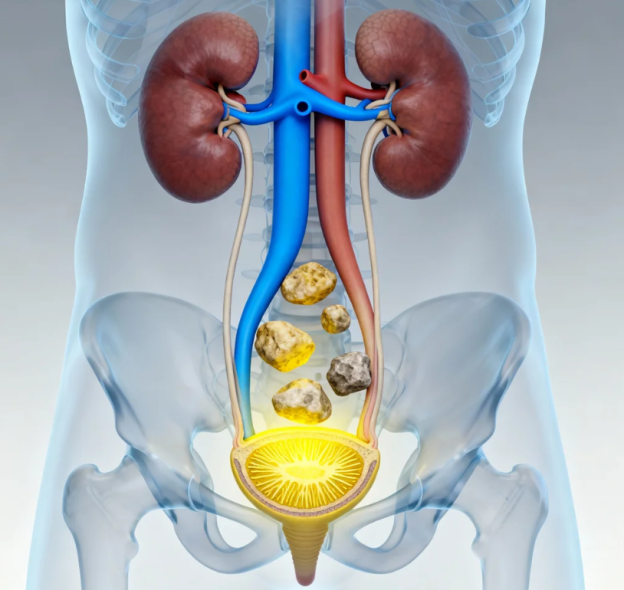Intestinal adhesions can be caused by abdominal surgery, intraperitoneal infection, abdominal trauma, abdominal radiotherapy, congenital factors, etc., and can be relieved by medication or surgery. Prompt medical attention is recommended so that an appropriate treatment plan can be chosen under a doctor’s guidance.
- Abdominal surgery
Abdominal surgery is the most common cause. Surgical manipulation may injure the bowel or peritoneum, triggering a local inflammatory reaction and fibrous tissue overgrowth. Appendectomy, hysterectomy, and other abdominal procedures carry a high risk. Patients may complain of abdominal pain, distension, or altered bowel habits. Amoxicillin capsules or cefixime dispersible tablets are often prescribed to prevent infection; severe cases may require adhesiolysis. - Intraperitoneal infection
Infections such as peritonitis or pelvic inflammatory disease produce hyperemic, edematous peritoneum; after the inflammation subsides, fibrous adhesions remain. Tuberculous peritonitis is particularly prone to extensive adhesions. Fever and abdominal tenderness are common. Therapy targets the primary infection with antibiotics such as levofloxacin or metronidazole; surgical drainage is sometimes necessary. - Abdominal trauma
Blunt or crush injuries can damage bowel or peritoneum, and adhesions form during healing. High-speed collisions or falls carry the greatest risk. Persistent pain and diminished bowel sounds may appear. Early symptoms can be controlled with ibuprofen sustained-release capsules; complete obstruction mandates surgery. - Abdominal radiotherapy
Radiation for pelvic or abdominal tumors may injure the serosal layer of the bowel, leading to chronic inflammation and fibrosis. Gynecologic or rectal cancers are the most frequent settings. Radiation enteritis with secondary adhesions presents as diarrhea or tenesmus. Doctors may prescribe montmorillonite powder or live combined Bifidobacterium capsules; severe cases can require a diverting stoma. - Congenital factors
A minority of patients have congenital maldevelopment of the mesentery or peritoneal defects that predispose to spontaneous adhesions. Intestinal malrotation is the classic example. Infants may present with recurrent pain or vomiting. Imaging confirms the diagnosis, and corrective surgery is performed when indicated.
Daily care
Patients should eat soft, low-fiber foods in small, frequent meals and avoid binge eating. Gentle abdominal massage and light exercise promote peristalsis, but strenuous activity should be avoided. Maintain regular bowel habits. Seek immediate care if pain worsens, vomiting develops, or flatus and stool cease—signs of possible obstruction. Postoperative patients must follow prescribed rehabilitation programs and attend scheduled follow-ups to monitor for recurrent adhesions.
| No. | Cause | Mechanism / Typical settings | Common symptoms / signs | Medical treatment | Surgical treatment | Special notes |
|---|---|---|---|---|---|---|
| 1 | Abdominal surgery (most common) | Surgical trauma → local inflammation → fibrous overgrowth (e.g. after appendectomy, hysterectomy) | Abdominal pain, distension, altered bowel habits | Amoxicillin, cefixime (infection prophylaxis) | Adhesiolysis for severe obstruction | Highest incidence within first post-operative year |
| 2 | Intraperitoneal infection | Peritonitis, PID, TB peritonitis → exudative inflammation → fibrous adhesions after resolution | Fever, abdominal tenderness, leukocytosis | Levofloxacin, metronidazole; anti-TB drugs if indicated | Percutaneous or open drainage of abscess / dense adhesions | TB peritonitis tends to produce dense, wide-spread adhesions |
| 3 | Abdominal trauma | Blunt or crush injury (MVC, falls) → serosal tears → healing with adhesion formation | Persistent pain, diminished bowel sounds, signs of ileus | Ibuprofen SR (symptom relief), IV fluids | Laparotomy if complete obstruction or strangulation | High index of suspicion after high-energy trauma |
| 4 | Abdominal radiotherapy | Radiation-induced serositis → chronic inflammation & fibrosis (gynae/rectal cancers) | Diarrhea, tenesmus, bleeding, chronic pain | Montmorillonite powder, Bifidobacterium triple-therapy capsules | Diverting stoma or resection for refractory stricture | Dose-dependent; may present months to years after RT |
| 5 | Congenital factors | Maldevelopment of mesentery or peritoneal fixation defects (e.g. intestinal malrotation) | Neonatal/infantile recurrent pain, vomiting, failure to thrive | Supportive (NG decompression, fluids) | Corrective surgery (Ladd procedure, adhesiolysis) | Diagnose with upper-GI contrast series or US |
| Daily care for all patients | — | — | — | Low-fiber, easily digested diet; small frequent meals; gentle abdominal massage & light exercise; prompt medical review if pain ↑, vomiting, or no flatus/stool | — | Avoid strenuous activity; maintain regular bowel habits; scheduled follow-up for post-operative patients |









